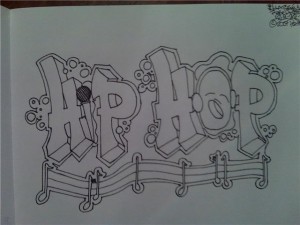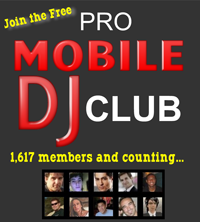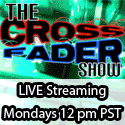by Dave Austin
 No one need tell you that one of the most popular music forms today is hip-hop. Often used interchangeably with the term rap, hip-hop actually denotes an entire subculture. However, popularity aside, many don’t have a clear understanding of the form’s roots or complex history.
No one need tell you that one of the most popular music forms today is hip-hop. Often used interchangeably with the term rap, hip-hop actually denotes an entire subculture. However, popularity aside, many don’t have a clear understanding of the form’s roots or complex history.
Germinating from New York block parties of the 70’s, particularly in the Bronx where African-American and Puerto Rican influences came together, DJs played soul and funk and began isolating percussion breaks of popular songs. Also, elements of reggae and dub music were being stirred into the mix via a large Jamaican immigrant community. Scratching (purportedly invented by Grand Wizard Theodore), beat mixing and beat juggling, along with the breaks, crated a rhythmic base, almost always in 4/4 time, which could be rapped over.
The “golden age” of hip-hop, – between the mid 1980’s and mid 1990’s – was characterized by its diversity, innovation, quality and influence. While the music was still experimental, some of the artists most associated with the period are Public Enemy, De La Soul, A Tribe Called Quest, the Jungle Brothers and others, collectively referred to as the Native Tongues. This was also a time when nothing was contrived or formatted and mic prodigies created themselves and the music form at the same time.
In 1990, MC Hammer took hip-hop mainstream with his multi-platinum album, “Please Hammer, Don’t Hurt ‘Em.” The album reached reach #1 and spun out the Top 10 hit single, “Can’t Touch This.” More importantly, it raised rap music to a new level of popularity and was the first hip-hop album to be certified Diamond by the RIAA with sales over ten million. (Current sales exceed 18 million!)
Around 1992, West Coast rap began to dominate the scene with Dr. Dre’s release of “The Chronic,” which peaked at #1 on the R&B/Hip-Hop Chart. (See article on East Coast/West Coast hip-hop rivalry) About this same time, Wu-Tang Clan, The Notorious B.I.G., Jay-Z and Nas helped put East Coast back in the picture. Also, the Beastie Boys crossed color lines and gained the respect of many artists during the 90’s, opening the door for white rappers like Vanilla Ice and Eminem. By the end of the decade, hip-hop had become an integral part of popular music and, today, many American pop songs contain hip-hop elements.
In the late 90’s, hip-hop styles began to splinter into a number of regional sub-genres. Southern rap gained ground with offerings by Atlanta’s Arrested Development, OutKast and Goodie Mob. New Orleans and Miami produced prominent artists as did St. Louis, Washington, D.C., Chicago and Detroit.
By 2005, sales of hip-hop began to fade, prompting Time magazine to question if mainstream hip-hop was dying. Billboard determined that since 2000, rap sales had dropped 44% and accounted for only 10% of all music sales. Some critics claim fans were fed up with the violence, degrading imagery and lyrics. Conversely, the argument is made that hip-hop is as popular as ever, but fans have found other means to consume the music, mainly via downloads – both legal and illegal.
Only time will resolve this question. However, one thing is sure: hip-hop is here to stay and remains a formidable force in modern music.
Dave Austin – Music Professor
 Dave Austin began his career at age 13 at a small, hometown radio station. He went on to graduate from the University of Southern Mississippi with a Bachelor’s degree in broadcasting. Since that time, Dave has been a mobile and radio DJ, radio station Program Director, and a TV news reporter and anchorman. He has also done voiceover work for documentaries and commercials. In 1986 Dave’s longtime passion for music prompted him to start “Southern Celebrations DJs,” a multi-system mobile entertainment company serving clients in Tennessee, Northern Georgia and Northern Alabama. You can email him c/o [email protected] or visit his website – Moonlight Mobile Music.
Dave Austin began his career at age 13 at a small, hometown radio station. He went on to graduate from the University of Southern Mississippi with a Bachelor’s degree in broadcasting. Since that time, Dave has been a mobile and radio DJ, radio station Program Director, and a TV news reporter and anchorman. He has also done voiceover work for documentaries and commercials. In 1986 Dave’s longtime passion for music prompted him to start “Southern Celebrations DJs,” a multi-system mobile entertainment company serving clients in Tennessee, Northern Georgia and Northern Alabama. You can email him c/o [email protected] or visit his website – Moonlight Mobile Music.
![]() Tweet This Post
Tweet This Post









